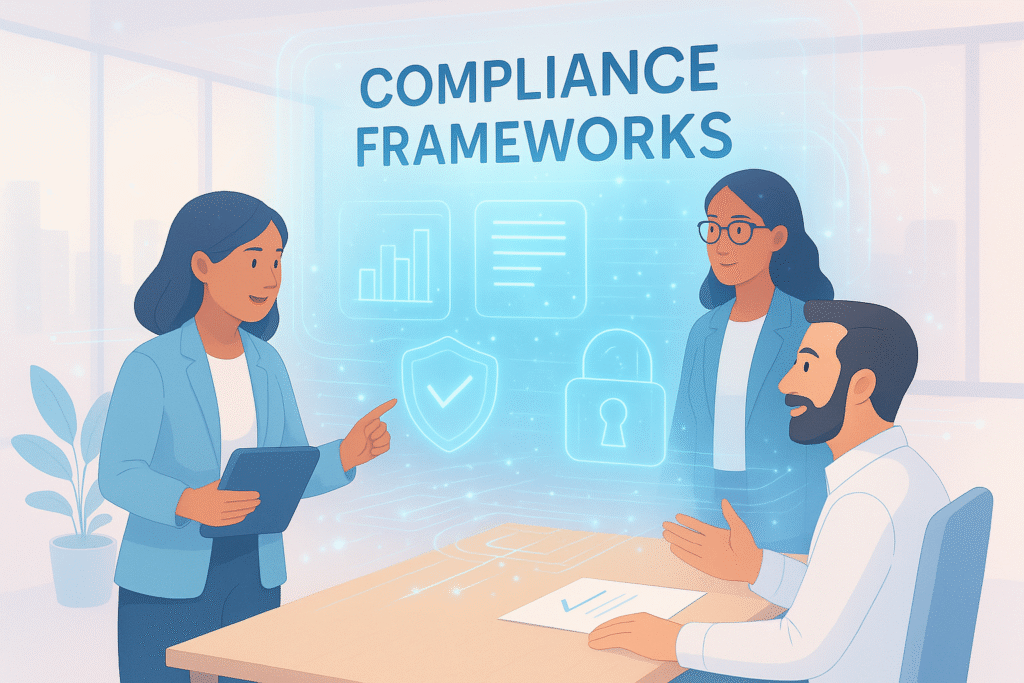Environmental, Social, and Governance (ESG) compliance has become a topic of heavy discussion in 2025. As regulatory frameworks change and stakeholder expectations adjust with social and political movements, organizations are examining how embedding ESG principles into their operations affects sustainability, transparency, and ethical governance. In this article, we’ll take a broad, overhead look at ESG compliance, its challenges, and actionable strategies for businesses.
The ESG Compliance Discussion
ESG compliance is increasingly critical for organizations in the United States due to evolving regulatory requirements. Federal directives such as the Securities and Exchange Commission (SEC) climate disclosure rules mandate public companies to report on greenhouse gas (GHG) emissions, assess climate-related risks, and disclose financial accountability for climate strategies. Additionally, state-level regulations, particularly in California, are setting stricter standards. Laws like the Climate Corporate Data Accountability Act (SB 253) require entities with over $1 billion in annual revenues to report Scope 1, Scope 2, and eventually Scope 3 emissions, while SB 261 mandates disclosures of climate-related financial risks.
Key Components of ESG Compliance
ESG compliance encompasses three main pillars:
-
Environmental:
-
Reducing carbon emissions and adopting renewable energy sources.
-
Minimizing waste and harmful chemical usage.
-
Tracking environmental impact across supply chains.
-
-
Social:
-
Promoting diversity, equity, and inclusion (DEI).
-
Ensuring fair wages and ethical labor practices.
-
Supporting community welfare initiatives.
-
-
Governance:
-
Establishing transparent corporate policies.
-
Preventing corruption and bribery.
-
Ensuring board diversity and accountability.
-
Challenges in ESG Compliance
ESG compliance presents several hurdles:
-
Complex Regulations: Regional variations in ESG laws require businesses to navigate a patchwork of standards. For example, the CSRD demands “double materiality” assessments that evaluate both financial impacts of ESG factors and societal effects of business operations.
-
Data Management: Collecting and analyzing ESG data can be overwhelming. Inconsistent reporting frameworks further complicate efforts to standardize disclosures.
-
Resource Intensity: Implementing ESG initiatives often requires significant upfront investment in technology, training, and expertise.
Strategies for Effective ESG Compliance
To address these challenges, organizations can adopt the following strategies:
-
Set Clear Policies and Goals:
Develop measurable sustainability objectives aligned with industry-specific regulations. Examples include reducing greenhouse gas emissions or improving labor conditions. -
Leverage Technology:
Use ESG compliance software to automate data collection, track metrics, and generate reports. Technologies like AI and blockchain enhance accuracy in reporting and ensure transparency in supply chain management. -
Collaborate Across Departments:
Effective ESG integration requires input from compliance teams, sustainability experts, risk managers, and corporate governance professionals. -
Conduct Audits:
Regular internal and external audits help identify gaps in ESG performance while ensuring adherence to evolving regulations. -
Engage Stakeholders:
Maintain transparency by publishing annual sustainability reports that communicate progress to investors, customers, employees, and regulators.
The Future of ESG Compliance
In most cases, ESG compliance isn’t getting any simpler. Companies are juggling different reporting requirements while trying to figure out where to put their time and money. With regulations changing at different speeds around the world, global businesses are dealing with a mixed bag of clear guidelines in some places and murky waters in others. Everyone has an opinion on how companies should handle ESG — investors want one thing, regulators another, and customers and employees have their own expectations.
Love it or hate it, knowing what compliance requirements actually apply to your industry and location is just good business sense. The good news? As these frameworks grow up and reporting standardizes to some degree, companies will likely find smarter ways to check the compliance boxes while still focusing on what matters to their business. The next few years will be pretty telling — we’ll see if ESG requirements find firm footing, continue to evolve across different markets and industries, or disappear altogether.




